Points
- Until now, the large amounts of carbon dioxide (CO2) associated with the natural gas production at gas fields in Indonesia have simply been emitted into the atmosphere.
- The Asian Development Bank (ADB) has agreed to support this project for developing the technique of separating and collecting CO2 and storing it to the underground safely. The ADB’s participation will allow for accelerating the project through cooperation between government bodies and private-sector companies to be finalized.
- The activities planned under the project include constructing facilities, conducting CO2 injection and monitoring, and putting together the technical guidelines needed for developing such projects in the future.
The Asian Development Bank (ADB), Indonesian Ministry of Energy and Mineral Resources, Japan International Cooperation Agency (JICA), and Pertamina, an Indonesian state-owned oil company, have concluded a Memorandum of Cooperation (MoC) regarding full-scale financing by the ADB toward the social implementation of the project as part of the Science and Technology Research Partnership for Sustainable Development (SATREPS)1), a joint program by JICA and Japan Science and Technology Agency (JST).
Since concluding an MoC with the ADB in June 2013 on the ADB’s participation and financing of the research project, the research group has used the financial support from the ADB to conduct a feasibility study to assess the potential for the capture and storage of the CO2 produced by the gas fields, a technique known as Carbon dioxide Capture and Storage (CCS)2). In response to the positive results of the study, the group has prepared for the full-scale participation required for a pilot project. The conclusion of this new MoC will allow for significant progress in the social implementation of the CCS technology, which is the first case in Southeast Asia. Until now, the large amounts of CO2 associated with the natural gas production at the gas fields in Indonesia have simply been emitted into the atmosphere. The development of technology to separate, collect, and store CO2 into the underground is anticipated to make an international contribution to reducing the greenhouse gas emissions in Indonesia as well as allowing for the promotion of clean development for undeveloped CO2 rich gas fields, and contributing to the stable supply of energy resources to both Indonesia and Japan in the future.
This research group centered around the Plan for Interdisciplinary Platforms of Kyoto University has been cooperating with Indonesia’s Bandung Institute of Technology (ITB) among other research institutions, and, with extensive support from Pertamina, has applied geological and geophysical methodology to assess and select underground formations for CO2 storage, and to design the concepts for surface facilities for separation, collection, and storage.
The research group has now secured approval for the ADB to take a central role in providing CCS facilities and equipment to the Indonesian Ministry of Energy and Mineral Resources, Pertamina, and other entities involved in producing gas in the Gundih Gas Field in Central Java, Indonesia, the focus of this research program. A pilot project will be launched to store the CO2 that is separated and collected at the Gundih Gas Field owned by Pertamina. Under the pilot project, it is planned to construct surface facilities for the separation, collection, transport, and injection of CO2 and to conduct CO2 injection and then to apply various kinds of geophysical methods to monitor the injected CO2 state for safety storage for long time.
The objective of this program is to use such results to devise Standard Operational Procedure (SOP)—namely, a set of technical guidelines essential for the future pursuit of CCS projects—and to present the procedure to relevant institutions. This project is the first CCS project to be conducted in Indonesia, and the results are keenly anticipated by various fields.
Program Information
| Research Area |
Environment and Energy
“Research contributing to advanced energy systems for low carbon society” |
| Project Title |
Pilot Study for Carbon Sequestration and Monitoring in Gundih Area, Central Java Province, Indonesia |
| Principal Investigator |
Specially Appointed Prof. Toshifumi MATSUOKA (Plan for Interdisciplinary Platforms, Kyoto University) |
| URL |
http://www.jst.go.jp/global/english/kadai/h2305_indonesia.html |
Research Background and Objectives
At the COP213) conference held in Paris in December 2015, targets value for reducing emissions of the CO2 were set out for each country, and initiatives have been launched to work toward achieving these targets through international cooperation. Indonesia has an amicable relationship with Japan and is an important partner for Japan from the perspective of the supply of energy resources. In Indonesia legal systems regarding CO2 emissions have not yet been fully developed and the CO2 are emitted into the atmosphere from the existing industrial facilities. As effective method has not been established for treating the CO2 associated with the gas when it is produced from the gas fields, there are currently delays in the development of the many CO2 rich gas fields in Indonesia.
In contrast, in Japan projects to research and verify CCS have been conducted under the initiative of the Japanese Ministry of Economy, Trade and Industry, and such projects have provided significant amounts of knowledge and experience.
The objective of this project is therefore to transfer the CCS technology to Indonesia—which, same as Japan, has a geological environment that is known in geological terms as a mobile belt—and to pursue technology development and the training of technical experts with the aim of supporting the full-scale implementation of CCS in the future.
Content and Structure of the Research
The main purpose of the research and development is the development and application of methodology to select the optimum CO2 injection reservoir on the basis of geological and geophysical information, and methodology to monitor the behavior of the stored CO2 in the geological formations. Research and development is also being conducted into related issues such as the methods of separating, collecting, and injecting the CO2, legal regulations, risk analysis, and public acceptance. The objective is ultimately to use the results of such research as a basis for creating technical guidelines regarding projects for the capture and storage of CO2 and to work toward encouraging their more widespread use.
More specifically, the research group conducts research on reservoir assessment4) techniques that combine geological analysis, laboratory rock tests5), and reservoir simulations6) to assess CO2 reservoirs. The techniques for monitoring CO2 include seismic reflection surveys7), electromagnetic surveys8), gravity surveys9), and microseismic observations10), and the research group also engages in research to develop the necessary devices and methods for these surveys as well as techniques for analyzing and interpreting the data obtained through surveys. It is planned to use these techniques to conduct dynamic monitoring of the CO2 before and after injection on ongoing basis. The observation equipment needed for monitoring is supplied to Indonesia, and technology transfer and personnel training are being conducted by using the equipment provided.
It is planned for the separation and capture of CO2 to be conducted at the Central Processing Plant (CPP) of the Gundih Gas Field in Central Java, where the production of natural gas was launched in 2014. The gas produced at the Gundih Gas Field has a CO2 content of around 20%, and the field currently emits around 800 tons of CO2 into the atmosphere daily. This project will test the application of separation and capture techniques on a portion of the CO2 emitted into the atmosphere. Once the CO2 has then been liquefied, it will be transported around 22 kilometers to Jepon-1, a well owned by Pertamina, and injected. This CO2 injection will be conducted for two years.
The project is being conducted with the cooperation of Pertamina, the owner of the gas field, and in collaboration with Bandung Institute of Technology (ITB) and other Indonesian universities and research institutions as research partners. The principal research bodies in Japan are research institutions including Kyoto University, Waseda University, Kyushu University, Akita University, and Fukada Geological Institute, and Japan Petroleum Exploration and other companies connected to CCS projects.
Future Plans
In FY2016, the final year of the CCS project under the SATREPS program, a baseline survey will be conducted to observe seismic reflection, as one of core method of monitoring. Various preparations will also be made for the monitoring of CO2 after its injection, including preparing for gravity surveys, microseismic observations, and the continuous observation of CO2 gas. The outcomes of the research that has been conducted will be used to devise proposals for technical guidelines for CCS projects in Indonesia, and technology transfer and personnel training will be continued. In response to the ADB’s provision of research funding for the construction of ground facilities, work will be commenced on the design and development of such facilities with the aim of commencing CO2 injection in 2017.
Photos
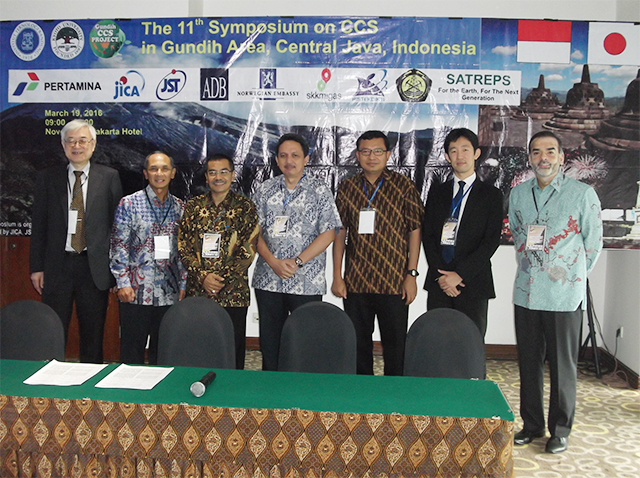
Photo 1: The MoC signing ceremony
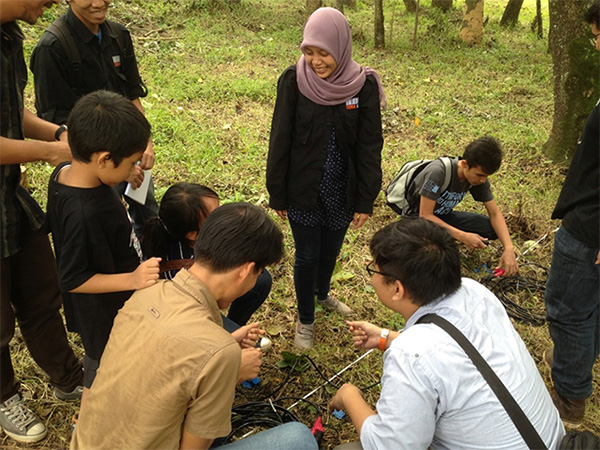
Photo 2: Technical guidance at Bandung Institute of Technology on the use of equipment provided
by the SATREPS project
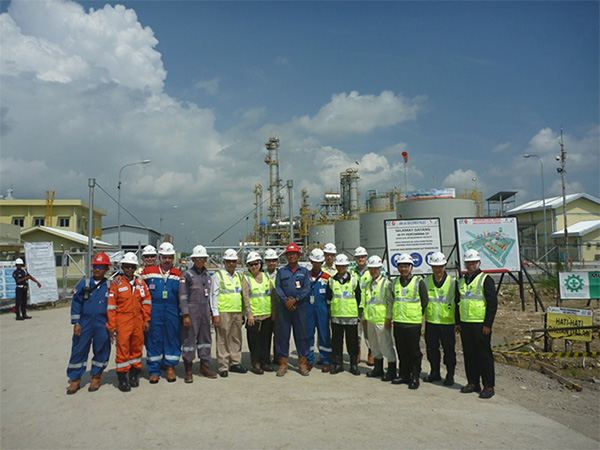
Photo 3: Pertamina’s Gundih Central Processing Plant (CPP)
(The project will separate and collect the CO2 emitted by the CPP)
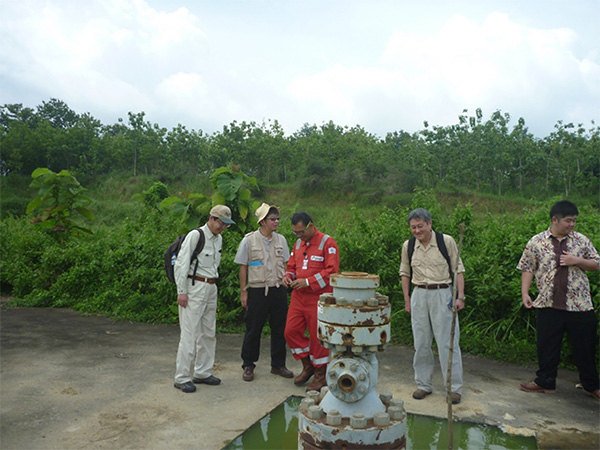
Photo 4: Jepon-1, the well planned for use in CO2 injection
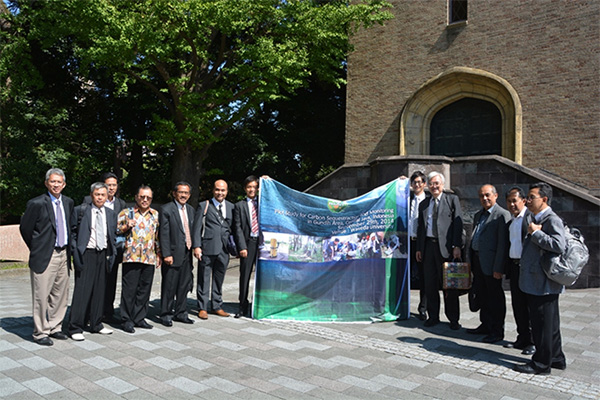
Photo 5: Symposium on the SATREPS Gundih CCS Project
(Held in September 2014 at the Okuma Auditorium, Waseda University)

Photo 6: Baseline survey for the electromagnetic method
(Conducted near Jepon-1 in August 2014)

Photo 7: The geological survey in the field
(Conducted in January 2016)
Notes and Terminology
- 1) SATREPS
- SATREPS (Science and Technology Research Partnership for Sustainable Development) is a Japanese government program that promotes international joint research to address global issues through three- to five-year projects involving partnerships between researchers in Japan and researchers in developing countries. The program is collaboration between Japan Science and Technology Agency (JST) and the Japan International Cooperation Agency (JICA). JST uses research contracts to support research costs incurred in Japan (and in other locations outside the developing country involved in the project). JICA provides support through its technical cooperation project framework to cover costs in the developing country. Overall R&D management of the international joint research is handled jointly by JST, which has expertise in funding research projects at research institutions in Japan, and JICA, which has expertise in technical cooperation in developing countries.
-
SATREPS Website: http://www.jst.go.jp/global/english/about.html
- 2) Carbon dioxide Capture and Storage (CCS)
- Carbon dioxide Capture and Storage (CCS) refers to the separation, capture, and storage of carbon dioxide (CO2). This is the technique which separates and captures the CO2 produced from thermal power plants and oil and gas production facilities, etc. and injects it with a well separately prepared into a geological formation at a depth of around 1000 meters for storage.
- 3) COP21
- COP21 stands for the 21st session of the Conference of the Parties (member states) to the United Nations Framework Convention on Climate Change (UNFCCC). The UNFCCC was adopted at the UN Earth Summit in 1992, encouraging international conferences to address measures for tackling global warming.
- 4) Reservoir assessment
- Reservoir assessment is done by using geological, geophysical, and geochemical tests and analytical methods to ascertain the geological, mechanical, and hydraulic properties of the geological formations into which the CO2 is injected from the surface. This makes it possible to assess to what extent (amount and time period) it is possible to store CO2.
- 5) Rock test
- Rock test is to measure physical properties of rocks in a laboratory, which are collected from a borehole drilled in a geological formation. The measuring properties are mechanical (stiffness, etc.) and hydraulic (permeability, etc.) one and some others.
- 6) Reservoir simulation
- A reservoir simulation is to simulate CO2 behavior after injection on the basis of numerical model of the reservoir using high performance computer. The parameters used for simulation are mechanical and hydraulic properties of the reservoir estimated from geological data of the geological formation and the results of the aforementioned rock tests, etc. The simulation results allow researchers to estimate the state of the injected CO2 100 or 1000 years future.
- 7) Seismic reflection survey
- Seismic reflection survey is a geophysical method which can delineate subsurface structure and properties by acquiring seismic reflection waves with many surface receivers, which are generated on the ground surface with an artificial seismic source such as a large vibrator. It is possible to estimate the underground distribution of the CO2 by analyzing the seismic waves reflected from the CO2 reservoir at a depth of around 1000 meters.
- 8) Electromagnetic survey
- Electromagnetic survey is a geophysical method which can estimate the underground resistivity structure by artificially creating electromagnetic fields on the ground surface and using sensors deployed on the ground surface to measure the secondary magnetic fields generated by the underground geological formations. As the secondary magnetic field differs depending on whether or not CO2 is present, the analysis of measured data can be used to estimate the distribution of the CO2.
- 9) Gravity surveys
- Gravity survey is a geophysical method which can detect the position of buried objects and the form of the geological formations, etc. through subsurface density variations measured. In this survey, the gravity data measured on the earth’s surface with a gravity meter are analyzed for estimating gravity anomaly (deviation from a mean gravity at the location) corresponding to subsurface density variations. The most typical gravity meter senses changes in gravity through the expansion and contraction of the spring installed on the gravity meter. As it has a lower density than rocks, CO2 may be detected because its accumulation makes the density lower than the surrounding rocks.
- 10) Microseismic observation
- As the area of the geological formation into which CO2 is injected has a higher pressure in comparison with the surrounding geological formation, this may create micro-vibrations. If these vibrations can be detected by the seismometers installed nearby on the ground surface for observing micro-seismic activity, it is possible to ascertain the dynamic state of the injected CO2.
Contact
[About Research]
Specially Appointed Prof. Toshifumi MATSUOKA
Plan for Interdisciplinary Platforms, Kyoto University
Tel: +81-75-383-3204
E-mail: 
[About JST]
Department of International Affairs (SATREPS group), JST
K’s Goban-cho, 7 Gobancho, Chiyoda-ku, Tokyo 102-0076, Japan
Tel: +81-3-5214-8085
E-mail: 
[About JICA]
Office of Media and Public Relations, Japan International Cooperation Agency (JICA)
Tel: +81-3-5226-9780
E-mail: 